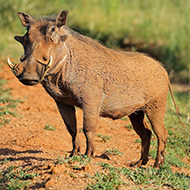Hotter weather and previous incidents of heat exhaustion can increase risk of EHI.
A new study, led by the University of Bristol has identified a number of factors that may help to predict incidents of exertion heat illness (EHI) in thoroughbred racehorses.
Hotter weather, longer and heavier going races, and whether a horse has previously suffered from heat exhaustion, can all increase the risk of EHI.
The symptoms of EHI can range from a light increase in a horse’s respiratory rate and heart rate, to severe central nervous system dysfunction or death. Treatment is mainly through early identification and rapid cooling with cold water.
The researchers studied all runners at British racecourses recorded in the British Horseracing Authority (BHA) database between 1 July 2010 and 30 April 2018. There were 704,434 runners, of which 702 resulted in an EHI incident.
They identified that there are a number of factors that contribute to the risk of EHI, including age of horse, individual susceptibility, workload (ground conditions and race distance), race start time, average temperature in the five days prior to the race, and environmental factors such as humidity, temperature, windspeed, and solar radiation, measured using the wet bulb globe temperature index (WGBT).
Using these risk factors they set out to determine if it was possible to predict the occurrence of EHI in racehorses to assist in early identification.
They were able to predict over 80 per cent of EHI incidents, but they warned that the model produced a high number of false positives. This was due to the difficulty in identifying susceptible horses from those running under the same conditions.
Researchers found a strong link between WBGT and EHI, suggesting that it is important to monitor the weather in order to help decision making before and during race meetings. They also suggest that it is particularly important that horses with prior incidents of EHI are identified to racecourse veterinary officers to allow greater monitoring and early intervention.
Honorary research fellow at the Bristol Veterinary School and author, Dr Leah Trigg said: "Racecourse officials should monitor WBGT at race meetings to help decide whether racing should go ahead, or if it does go ahead whether additional resources such as extra cool down areas should be provided.
"This data should be used to develop evidence-based policy to protect the welfare of racehorses in current and future climates.”
The study has been published in Scientific Reports.






 The BSAVA has opened submissions for the BSAVA Clinical Research Abstracts 2026.
The BSAVA has opened submissions for the BSAVA Clinical Research Abstracts 2026.
